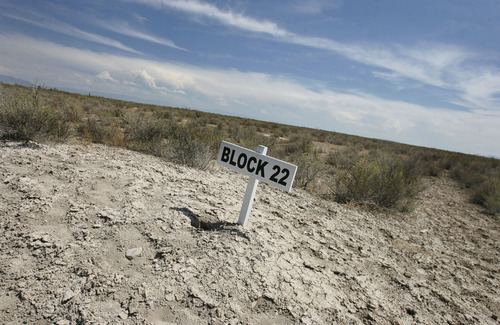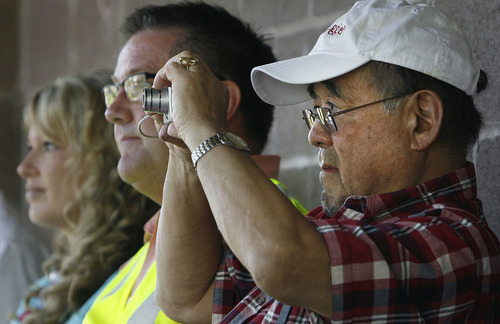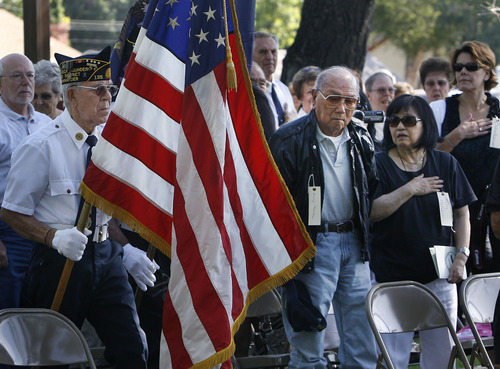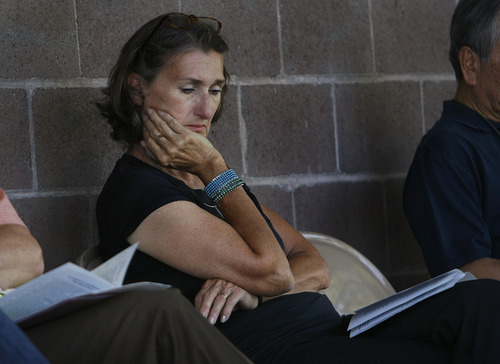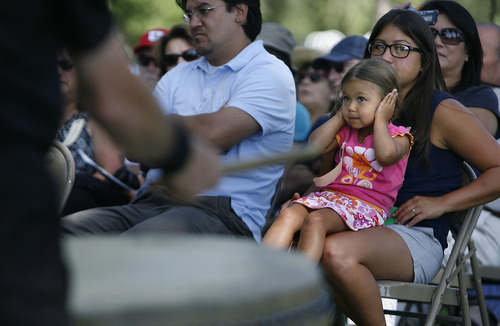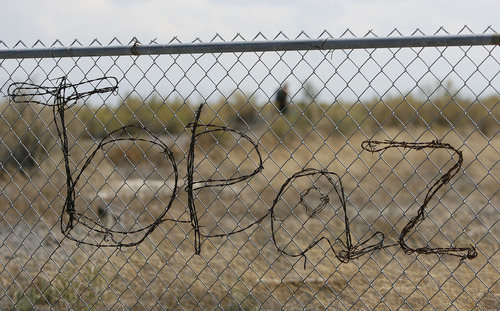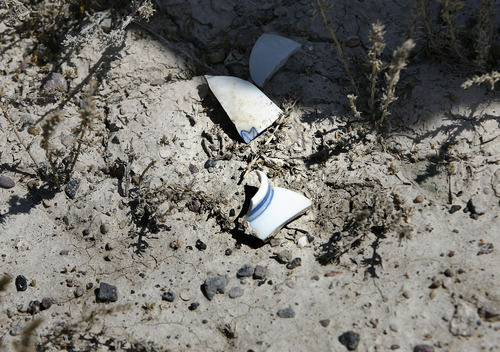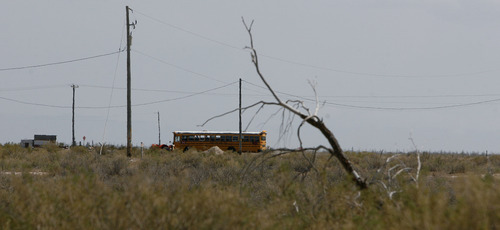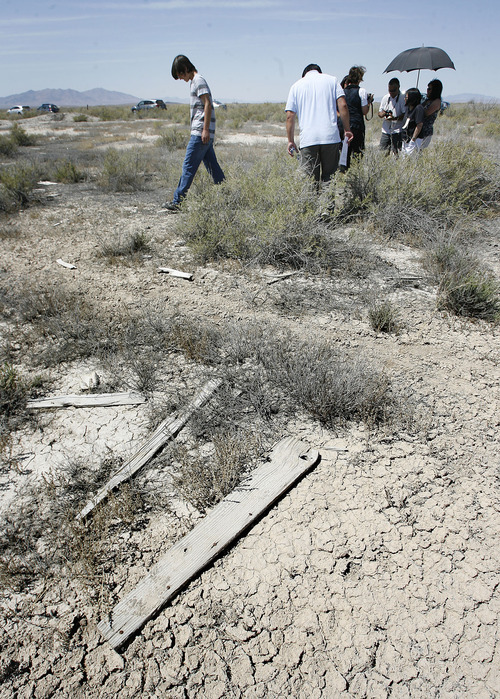This is an archived article that was published on sltrib.com in 2012, and information in the article may be outdated. It is provided only for personal research purposes and may not be reprinted.
Delta • The first time George Murakami brought his wife and four children to Topaz, it was a blistering hot July Fourth.
The car broke down that day, temporarily stranding the young Utah family in the parched alkali desert where Murakami had spent nearly three years as a teenager, one of 11,212 Japanese Americans held behind barbed wire because their government considered them a threat.
On Saturday, the 85-year-old former internee was back again in Topaz to pass along to two more generations — grandchildren and great-grandchildren — his bittersweet story of imprisonment.
The Murakamis, who live in the Salt Lake Valley, were among the 130 people who spent the day in Delta, breaking ground for the long-awaited Topaz Museum and Education Center and touring the former camp 16 miles northwest of town.
The museum on Delta's Main Street, which will tell the story of the camp and showcase artifacts and artwork from internees, is to be finished in two years, said Jane Beckwith, president of the volunteer museum board.
Among those attending the ground breaking were seven former internees and their families as well as dozens of Delta-area residents.
Such ceremonies, Beckwith said, are "an important way to further bind Delta and Topaz for we are inextricably bound by an event that should never be forgotten."
Thousands of Japanese Americans living in the Bay Area were sent by train to the remote Utah camp after Japan attacked Pearl Harbor on Dec. 7, 1941. Altogether, more than 110,000 Japanese Americans who had been living along the West Coast were held in 10 inland camps until the war ended.
Unlike the sorrowful and rarely shared memories of parents and grandparents forced to uproot their families, Murakami has good reminiscences of his high school years in the camp.
Gesturing across the desert where only greasewood now grows, covering up pieces of old boards, shards of rice bowls and broken clay water pipes, Murakami boasted Saturday of his Topaz High School football team beating the beefier Utah farm boys from area schools.
Although the Japanese American boys were generally smaller, they were faster, said Murakami, who was a halfback.
A recruiter came from the University of Michigan and persuaded the entire football team to go to work for the university, Murakami said.
Internees were able to leave the camp if they had sponsors or jobs. They left right after graduation in 1944 and were working in Ann Arbor when the war ended the next year.
Murakami's father became a chef in Salt Lake City, and the younger man eventually had a career as a produce buyer for Associated Foods.
Willie Ito, a resident of Southern California, had not been back to Topaz since he was a youngster in the camp, teaching himself to animate cartoons by drawing in the margins of Sears and Montgomery Ward catalogs and then flipping the pages.
"This is the first time I've been back in 70 years," Ito said. "Nothing has changed!"
He told those gathered for the groundbreaking about traveling to Delta in trains with the windows papered over to conceal the train's destination.
His grandfather's black suit was gray with the fine, white alkaline dust by the time they arrived, he said.
Alan Kawasaki, a Bay Area architect, said it meant much to him to design the museum, since his mother, sister, aunts and uncles were held at Topaz. His father was working in Japan at the time and Kawasaki had not yet been born.
David Bishop, 87, a resident of Hinckley near the internment camp, said he helped build the camp as a teenager, hauling supplies to the builders.
At Saturday's groundbreaking, he recalled the townspeople of Delta feeling that the camp was an injustice, he said.
A museum to that chapter of Millard County's history is "a wonderful thing," he said.
The Topaz Museum Board received a $714,314 grant from the National Park Service last spring and is still raising money for the $2.3 million project.
For more information on the museum, or to make a donation, go to http://www.topazmuseum.org. The Utah Historical Society also has put many Topaz photos online at this website.
Topaz Museum and Education Center
The $2.3 million project continues to raise funds. To make a donation, go to http://www.topazmuseum.org. The Utah Historical Society also has put many Topaz photos online at http://1.usa.gov/MkRF0q.


